


Notice: This is the official website of the All Empires History Community (Reg. 10 Feb 2002)
Cities of the New World |
Post Reply 
|
| Author | |
Guests 
Guest 
|
 Quote Quote  Reply Reply
 Topic: Cities of the New World Topic: Cities of the New WorldPosted: 25-May-2008 at 16:57 |
|
The history of the cities of the Americas is really fascinating. Some cities were founded in pre-Columbian times. Of them most are in ruins today, but some survived to these days, including Mexico city that today is the largest city in the planet. Others many were founded during the early Spanish explorations, including some cities in the U.S.. Many more were founded during the colonial times by the Brits, French, Dutch and Portuguese colonial powers. Others were build during the XIX century during the "expansion to the West" in U.S. and equivalent processes in Canada, Brazil and Hispanic America. Just a few has been founded in recent times, like Las Vegas in the U.S. or Brazilia in Brasil.
Let's explore the history of the cities of the Americas. Starting from the older, of course.
I invite everyone to post the history of his/her own city, or of a city they know, giving is located in the Americas, of course.
Cuzco, Peru. Former Inca Empire capital, founded circa 1200 A.D.
Cusco in West Indien
Etching, from Daniel Meisner, Sciographia Cosmica, published by Paulus Fürst, 1637–42 Deák 6 High in the Andes lies Cuzco, the ancient capital of the Incan empire. Founded around 1200 C.E., it was inhabited by rulers and nobility who lived in magnificent palaces and temples. Its fabled wealth of gold attracted the Spanish conquistadors, led by Francisco Pizarro in 1532. After deposing the leader Atahualpa, Pizarro plundered and sacked the city. A colonial settlement soon sprang up on the site, built on the foundations of the Incan city, and today it is one of the oldest continuously inhabited cities in the Western world.
This view of Cuzco is based on an illustration in the first complete survey of New World discoveries, published in Venice in 1556. The etching seen here was included in an emblem book by Daniel Meisner, originally published in the 1620s as the Political Treasure Chest, in which views of cities from Europe to Africa, Asia, and the New World are juxtaposed with moralizing and edifying verses about life in that part of the world. The emblem, a 16th-century pictorial-poetical form, is composed of a brief verse or motto, an image, and a lengthier, prose explanation. In this plate, “Nature is Thrifty,” the “wild men” or native peoples are praised for their ingenuity: lacking iron, they fell trees with fire and split logs with wooden wedges. The small procession of figures in the background represents the deceased leader Atahualpa being carried aloft to the High Temple. Ancient Cuzco
Cuzco, the puma city
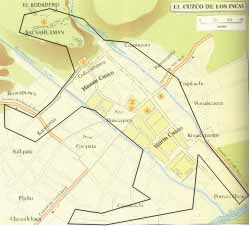   Today's touristic Cuzco.
 Inca wall
 Church on top of the temple of the sun
  |
|
 |
|
Vorian 
Colonel 
Joined: 06-Dec-2007 Location: Greece/Hellas Online Status: Offline Posts: 566 |
 Quote Quote  Reply Reply
 Posted: 25-May-2008 at 17:31 Posted: 25-May-2008 at 17:31 |
|
Do you have any pics of Tenochtitlan?
|
|
 |
|
Guests 
Guest 
|
 Quote Quote  Reply Reply
 Posted: 25-May-2008 at 18:06 Posted: 25-May-2008 at 18:06 |
|
Of course,
Founding of Tenochtitlan (today's Mexico city):
The Arrival of the Hummingbird Pictures of ancient Tenochtitlan,
 Tenochtitlan was a city crossed by channels and most of the commerce was carried by boats
 Today is buried underground Mexico city
   Mexico's flag symbols remembers the foundation of Tenochtitlan, including a glyph that said: tenochtitlan
 The sign for the Aztec capital, Tenochtitl�n, was a stone (tell) from which sprouted a prickly pear cactus (nochili), so the Tenochtitlan glyph means cactus in the stone.
 |
|
 |
|
Vorian 
Colonel 
Joined: 06-Dec-2007 Location: Greece/Hellas Online Status: Offline Posts: 566 |
 Quote Quote  Reply Reply
 Posted: 25-May-2008 at 18:15 Posted: 25-May-2008 at 18:15 |
|
Great pics, though I meant from what exists now.
|
|
 |
|
Guests 
Guest 
|
 Quote Quote  Reply Reply
 Posted: 25-May-2008 at 18:28 Posted: 25-May-2008 at 18:28 |
|
Today's Tenochtitlan was rebuild by Cortes and called Mexico city. It is the largest city in the world for now.
    But you can still see some remains of the ancient channels and chinanpas in Xochimilco.
  Edited by pinguin - 25-May-2008 at 18:30 |
|
 |
|
Jams 
Consul 
Suspended Joined: 06-Sep-2006 Online Status: Offline Posts: 365 |
 Quote Quote  Reply Reply
 Posted: 26-May-2008 at 15:01 Posted: 26-May-2008 at 15:01 |
|
Izamal - small town http://en.wikipedia.org/wiki/Izamal
Monastery build on top of Maya buildings
 "Izamal, mythical burial place of the god Itzamna, was one of the most sacred cities of the Maya. In 1533 the Franciscans dismantled the Pyramid of Popol Chac, thought to have been bigger than the great pyramid at Teotihuacan outside Mexico City. They used its stones to build one of the hemisphere's first convents"
Izamal streets
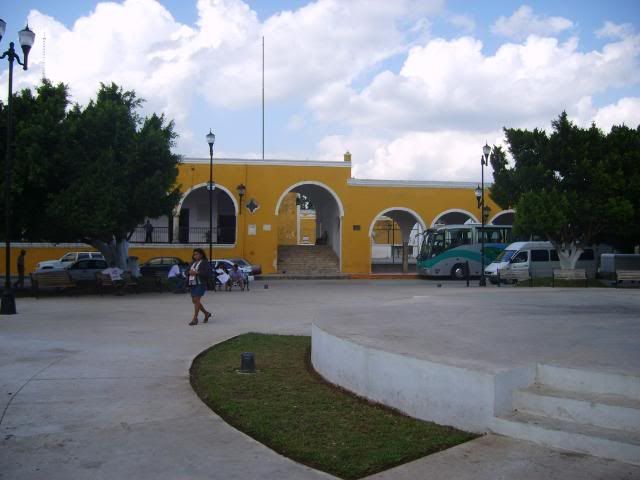 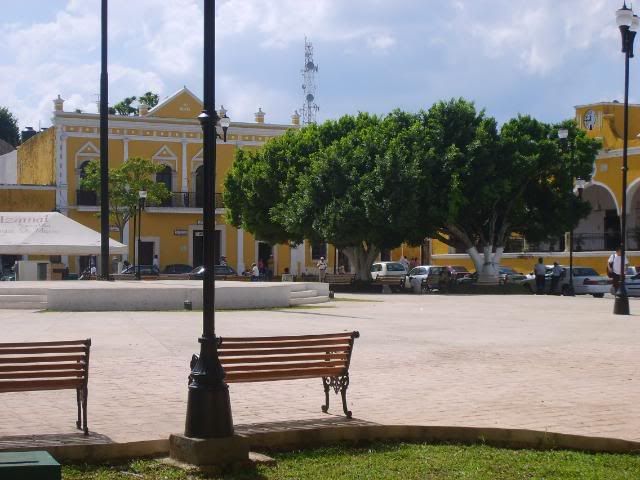 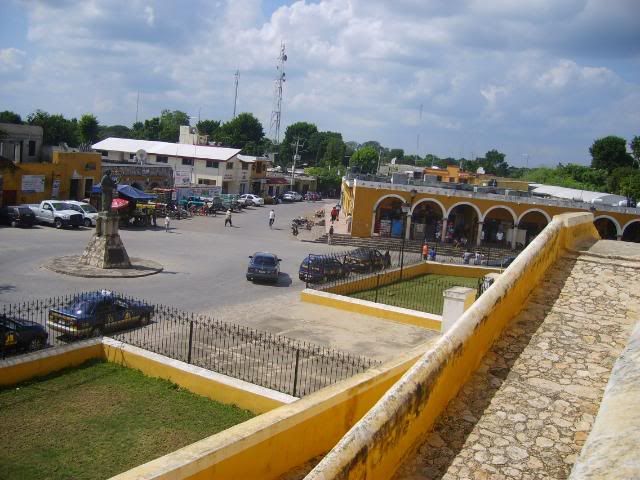 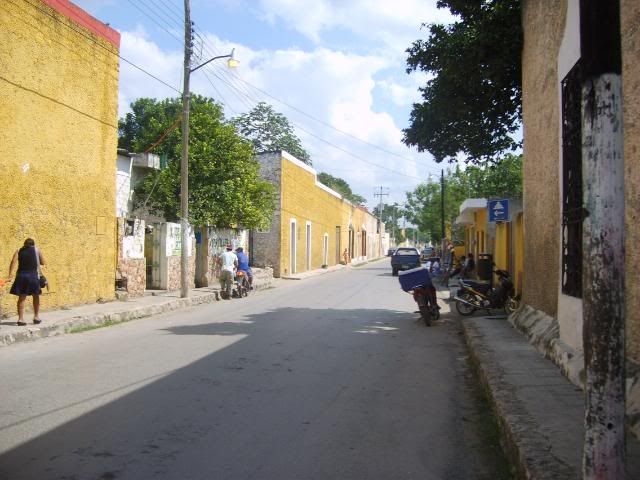 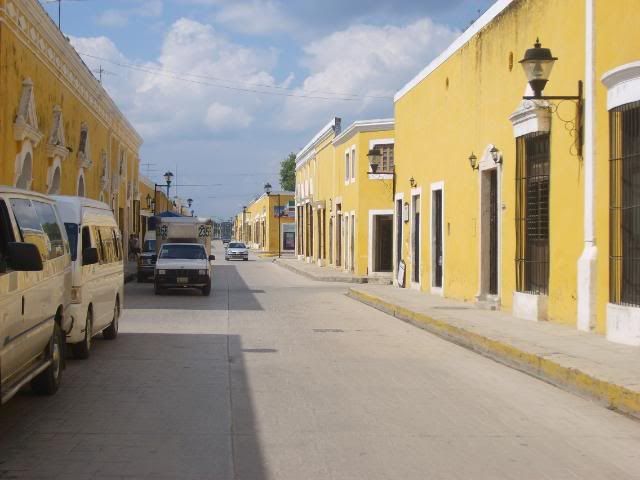 View from a pyramid
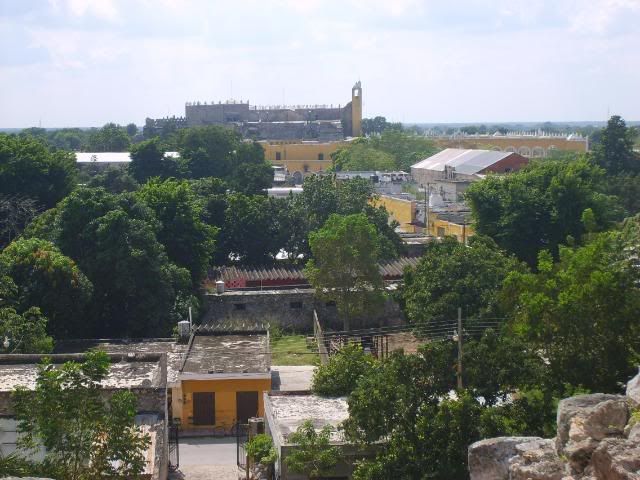  Maya ruins:
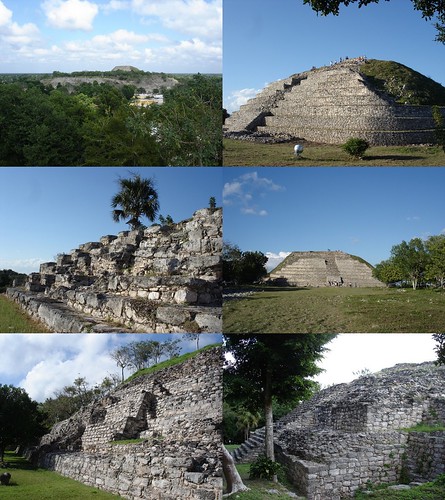 Edited by Jams - 26-May-2008 at 15:39 |
|
 |
|
Guests 
Guest 
|
 Quote Quote  Reply Reply
 Posted: 27-May-2008 at 03:46 Posted: 27-May-2008 at 03:46 |
|
Santo Domingo, The First European City in the New World
Santo Domingo, in Dominican Republic, is an interesting city. It was the first European city founded inthe new world. As such, it has many first, such as the first Christian temple, the first fortress, the first convent, the first european palace, etc. But also it has an absolute record: Established in 1538, Universidad Autónoma de Santo Domingo (UASD) is the oldest university in the New World.
Bartholomew Columbus, brother of Christopher Columbus, founded the settlement and named it after Saint Dominic, which is today the oldest European city in the New World. In reality, the city dates back to 1496, the period when the first Europeans settled there, although it was officially founded on August 5, 1498. Governor general Nicolás de Ovando arrived in 1502 with a fleet of 30 ships and 2,500 men. Santo Domingo was destroyed by a hurricane shortly after his arrival and he had it rebuilt on a different site nearby (Meining 1986:9). The original layout of the city and a large portion of its defensive wall can still be appreciated today throughout the Colonial Zone, declared a World Heritage Site by UNESCO in 1990. The Colonial Zone, bordered by the Río Ozama also has an impressive collection of 16th century buildings, including palatial houses and majestic churches that reflect the architectural style of the late medieval period.
The city's most important colonial buildings include the Catedral Santa María La Menor (Catedral Primada de América), which is the first Catholic cathedral in America; the Alcázar de Colón, once the residence of Don Diego Colón, the son of Christopher Columbus who became viceroy of the colony; the Monasterio de San Francisco, the ruins of the first monastery in America; the Museo de las Casas Reales, the former Palace of the Governor General and the Palace of Royal Audiences; the Parque Colón, a historic square; the Fortaleza Ozama, the oldest fortress in America; the Pantéon Nacional, a former Jesuit edifice now hosting the remains of various renown members of the Dominican Order; and the Iglesia del Convento Dominico, the first convent in America.
Throughout its first century, Santo Domingo was the launching pad for much of the exploration and conquest of the New World. The expeditions that led to Ponce de Leon's discovery of Puerto Rico, Hernando Cortes' conquest of Mexico and Balboa's sighting of the Pacific Ocean all started from Santo Domingo.
Pictures,
 Columbus palace,
 Universidad Autonoma Santo Domingo
 Santa Maria La Menor, first Christian temple
 Columbus lighhouse
  The city
       Edited by pinguin - 27-May-2008 at 03:52 |
|
 |
|
Guests 
Guest 
|
 Quote Quote  Reply Reply
 Posted: 29-May-2008 at 02:05 Posted: 29-May-2008 at 02:05 |
|
A former city of the Inca Empire and now the capital of Ecuador: Quito. Quito seems to be the oldest major city founded in pre-columbian times that it is still a living city. This comes from wiki
Quito's origins date back to the first millennium when the Quitu tribe occupied the area and eventually formed a commercial center. According to Juan de Velasco's 1767 book
Historia del Reino de Quito, the Quitu were conquered by the Caras tribe, who founded the Kingdom of Quito about 980 CE. In 1462 the Incas conquered the Kingdom of Quito. In 1533, Rumiñahui, an Inca war general, burned the city to prevent the Spanish from taking it, thereby destroying any traces of the ancient prehispanic city. Pictures
  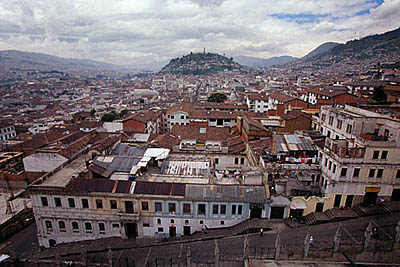 As far as I know, unlike in Mexico or Cuzco, no Inca ruins have been found in Quito.
|
|
 |
|
Guests 
Guest 
|
 Quote Quote  Reply Reply
 Posted: 10-Jun-2008 at 05:23 Posted: 10-Jun-2008 at 05:23 |
|
La Havana, The capital city of Cuba is the largest city in the Caribbean region and the place from where Central and South America was conquered to Spain. Althogh today is not exactly in its glory, it still preserves a style that not many other cities in the Americas have. History, from Wiki:
The current Havana area and its natural bay were first visited by Europeans during Sebastián de Ocampo's circumnavigation of the island, in 1509.[7] Shortly thereafter, in 1510, the first Spanish colonists arrived from Hispaniola and began the conquest of Cuba. Conquistador Diego Velázquez de Cuéllar founded Havana on August 25, 1515 on the southern coast of the island, near the present town of Surgidero de Batabanó. Between 1514 and 1519, the city had at least two different establishments. All attempts to found a city on Cuba's south coast failed. The city's location was adjacent to a superb harbor at the entrance to the Gulf of Mexico, and with easy access to the Gulf Stream, the main ocean current that navigators followed when traveling from the Americas to Europe. This location led to Havana’s early development as the principal port of Spain's New World colonies. An early map of Cuba drawn in 1514 places the town at the mouth of the river Onicaxinal, also on the south coast of Cuba. Another establishment was La Chorrera, today in the neighbourhood of Puentes Grandes, next to the Almendares River. The final establishment, commemorated by El Templete, was the sixth town founded by the Spanish on the island, called San Cristobal de la Habana by Pánfilo de Narváez: the name combines San Cristóbal, patron saint of Havana, and Habana, of obscure origin, possibly derived from Habaguanex, an Indian chief who controlled that area, as mentioned by Diego Velasquez in his report to the king of Spain. A legend relates that Habana was the name of Habaguanex's beautiful daughter,[8] but no known historical source corroborates this version. Havana moved to its current location next to what was then called Puerto de Carenas (literally, "Careening Bay"), in 1519. The quality of this natural bay, which now hosts Havana's harbor, warranted this change of location. Bartolomé de las Casas wrote:
Shortly after the founding of Cuba's first cities, the island served as little more than a base for the Conquista of other lands. Hernán Cortés organized his expedition to Mexico from here. Cuba, during the first years of the Discovery, provided no immediate wealth to the conquistadores, as it was poor in gold, silver and precious stones, and many of its settlers moved to the more promising lands of Mexico and South America that were being discovered and colonized at the time. The legends of Eldorado and the Seven Cities of Gold attracted many adventurers from Spain, and also from the adjacent colonies, leaving Havana and the rest of Cuba largely unpopulated. ------
Pictures:
Havana's capitol. U.S. influence there is undeniable.
 El morro castle
University of Havana
Museum of the Revolution
 Port
 Old cars
 Heminway's bar
 Heminway's house
 Havana's track buses
  Edited by pinguin - 10-Jun-2008 at 05:25 |
|
 |
|
Post Reply 
|
| Forum Jump | Forum Permissions  You cannot post new topics in this forum You cannot reply to topics in this forum You cannot delete your posts in this forum You cannot edit your posts in this forum You cannot create polls in this forum You cannot vote in polls in this forum |
Copyright ©2001-2009 Web Wiz
This page was generated in 0.094 seconds.











 Printable Version
Printable Version Google
Google Delicious
Delicious Digg
Digg StumbleUpon
StumbleUpon Windows Live
Windows Live Yahoo Bookmarks
Yahoo Bookmarks reddit
reddit Facebook
Facebook MySpace
MySpace Newsvine
Newsvine Furl
Furl Topic Options
Topic Options
